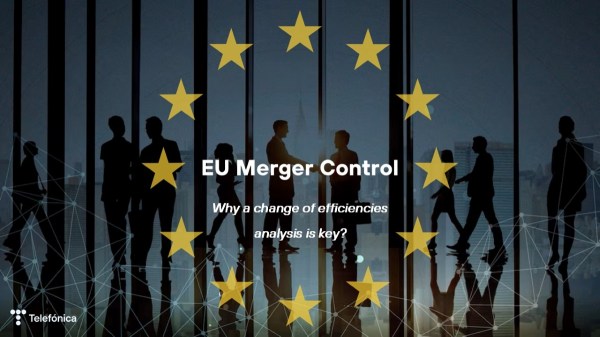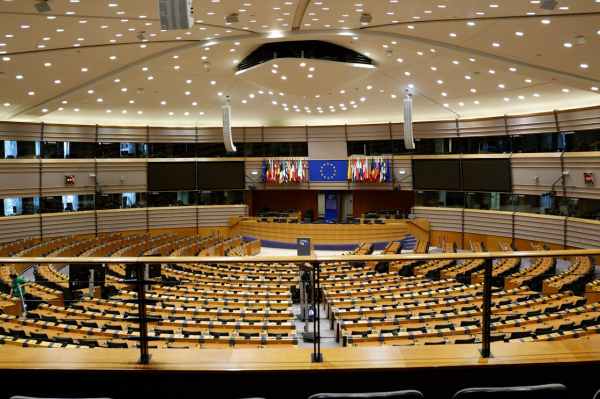In July, we launched the EU Merger Control series, outlining Telefónica’s position on the review of the EU Merger Guidelines, and welcomed this as an opportunity to strengthen Europe’s competitiveness and build a framework that supports innovation, resilience and strategic autonomy.
The first post examined why the Commission’s economic assessment approach must evolve ahead of any reform of EU merger control rules. The second post provided an overview of Telefónica’s response to the consultation. This third post sets out the sector’s call for an in-depth review of the merger guidelines to ensure they are fit for today’s EU challenges.
EU Merger Guidelines: 106 voices call for a robust overhaul
On 30th October, the Commission published the contributions to the EU Merger Guidelines consultation. In total, 106 stakeholders amongst National Competition Authorities, large businesses, SMEs, NGOs, consumers and economic consultants, have conveyed the same message: a robust review is needed to ensure the Horizontal and non-Horizontal Merger Guidelines give respond to the current EU challenges (scale-up, competitiveness, resilience, strategic autonomy).
The Commission is aware and working tirelessly to ensure the revised Merger Guidelines, probably expected by end of 2026, are fit for purpose. Telefónica is confident that the Commission is taking good note of the messages conveyed and will reflect those claims in the draft revised Guidelines expected by Spring 2026.
Towards clearer and forward-looking guidance
Overall, there is positive feedback in the application and relevance of the Merger Guidelines to date. Nonetheless, a great number of respondents (66%) consider the Guidelines do not provide correct, clear and comprehensive guidance, so there is room for improvement.
Inter alia, stakeholders highlight the need to include a forward-looking approach in the assessment of EU mergers including guidance on novel Theories of Harms, e.g. those related to ecosystems, network effects, entrenchment and potential competition.
On another note, a great number of stakeholders (mainly companies), indicate that costs have exceeded the benefits in the application of the Guidelines, and highlight issues like lack of legal certainty and transparency, high staffing and external advisers costs, static approach and difficulty to demonstrate pro-competitive rationales and future efficiencies as the concerns arisen that jeopardize the efficiency of the Guidelines.
Telefónica welcomes the general ask of respondents for further simplification in the revised Guidelines, taking a more dynamic approach that reflects firm and market specificities, and includes recent case-law and practice.
Coming to the substance, it is worth to highlight the messages coming from respondents in the different matters addressed in the targeted consultation:
Competitiveness, resilience, and innovation
There is a general view that the Guidelines do not provide sufficient guidance on how merger control reflects the objective of having a productive and competitive economy. In this sense, stakeholders ask for a dynamic and case by-case assessment, taking into account market-specific characteristics (e.g. investment cycles, capital intensity and rates of technological change), giving adequate weight to parameters of competition (innovation, investment, quality and choice) and considering long-term effects of merger on the incentives to innovate and invest.
Moreover, respondents highlight that competition is the main driver of innovation investment and resilience, and there is a special need to recognize innovation as a parameter of competition and clear guidance on how mergers may affect the ability and incentives to innovate and invest.
They also conclude that most important benefits associated with scale are, on the one hand, the ability and incentives to innovate (R&D efforts, high-risk innovation) and, on the other hand, the ability and incentives to invest (e.g. in network infrastructure).
Telefónica agrees with the general view of stakeholders and considers that scaling up is a key driver of competitiveness and resilience. This makes it essential to conduct a thorough analysis of the production function in each sector, as it directly influences a company’s ability and need to scale up within its relevant markets.
Likewise, Telefónica agrees that focus should be put on the merger company incentives to continue investing to launch better and innovative services and products. Investment intensity is key to understand whether the merged entity and the remaining actors have the ability and the incentives to continue competing on innovation – and investment is the way to launch innovative services.
For instance, in the telecoms markets, significant investments are necessary to tackle the technological changes required to innovate in network development and the offering of innovative services. Such investments require a minimum take up to achieve a return on investment. The more take up, the more ability to invest and innovate.
Assessing market power using structural features and other market indicators
Telefónica agrees with most respondents (90%), who consider that the Guidelines should be adjusted to assess market power and the risks of a merger to give rise to coordinated effects. In the same vein, we also agree with the majority of respondents rejecting the introduction of legal presumptions of market power based on market shares and/or HHI levels (Herfindahl Hirschman Index).
Sustainability and clean technologies
81% respondents indicate that the Guidelines should provide updated guidance on how merger control reflects the transition to a sustainable and climate-neutral economy. Telefónica agrees that further guidance is needed and also supports the general view that sustainability should be analysed as a parameter of competition when relevant.
Digitalisation
Overall, stakeholders consider the current framework should be adapted to adequately capture the risks of mergers in digital and tech sectors.
Efficiencies
There is a broad consensus that the Guidelines do not provide clear guidance on how to assess efficiencies, leaving quite room for improvement. Respondents ask the Commission to consider non price efficiencies that often take longer to materialize and may extend beyond the immediately affected market.
The timeframe is also crucial to determine whether efficiencies are merger specific, and a hundred responses agree it depends on the sector and the type of efficiency. Telefónica welcomes this approach and considers there is a need for broader consideration of dynamic efficiencies resulting from investment strategies that drive innovation over the long-term.
Lastly, the importance of the counterfactual is also emphasised. A case-by-case assessment is needed to determine whether the same synergies could be achieved through less anticompetitive means. Two takeaways stand out. First, the Commission shouldn’t dismiss efficiencies just because a theoretical alternative exists; in practice, mergers are often the most effective way to deliver them. Second, alternatives don’t have to be “perfect substitutes” only reasonably viable.
In short, we welcome that Telefónica´s main arguments and messages are shared by the vast majority of respondents and the broad consensus in the feedback received on how the revised Merger Guidelines should look like to meet the challenges ahead.
In the next post we will delve deeper into the topic of market power.









